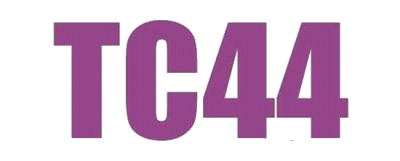Představ si, že jseš stroj, který překládá
Proč se překladače nikdy neptají, jak to myslíme?
Představ si, že jseš stroj, který překládá – třeba Google Translate nebo DeepL – a někdo po tobě chce, abys přeložil z angličtiny do češtiny větu I am a good student. Jak to přeložíš? Jako já jsem dobrý student, nebo já jsem dobrá studentka? Jakožto stroj nemáš ponětí, jestli se za tím anglickým zájmenem I skrývá v téhle větě muž, nebo žena. Ty jseš umělá inteligence, tak se prostě rozhodneš pro tu nejpravděpodobnější variantu, což je nejspíš ta mužská.
Nebo vezměme jinou větu: please sit down. Přeložíš to jako posaďte se, nebo posaď se? Jako stroj nevíš, jestli je věta určená jedné osobě, nebo několika a jestli by si ti lidé v češtině vykali, nebo tykali. Vybereš tedy to, co ti přijde nejvíc pravděpodobné, nejvíc obvyklé – asi tu variantu s vy, že ano.
V obou případech by bylo lepší, kdyby se stroj uživatele zeptal, jak to vlastně myslí. Strojové překladače ale neumí klást otázky. Jediné, co umí, je vyprodukovat to, nejčastěji viděly v datech, ze kterých se to překládání strojově naučily. Že uživatel měl možná na mysli něco úplně jiného, to je jim jedno.
Mně vždycky trochu lezlo na nervy, že strojové překladače se na nic neptají. Můj ideální překladač by dokázal rozeznat, že něco není jednoznačné, a zeptal by se mě, co přesně mám na mysli. Teprve potom by vydal překlad.
Tak dlouho mi to lezlo na nervy, až jsem sám takový překladač vyrobil: Fairslator. Lépe řečeno, Fairslator není překladač, je to spíše plug-in pro jakýkoliv jiný překladač. Fairslator vezme výstup ze strojového překladu, prozkoumá ho, automaticky rozpozná nejasnosti a v případě potřeby se zeptá.
Jak to tedy funguje, když požádáš Fairslator, aby ti přeložil I am a good student nebo sit down please do češtiny? Nejprve si musíš vybrat, kterou službou si to chceš nechat přeložit: DeepL, Google Translate nebo Microsoft Translator. Fairslator se s touto službou v zákulisí spojí a získá od ní překlad. Jako druhý krok Fairslator prozkoumá obě věty (anglický originál plus český překlad) a pokusí se zjistit, zda se tam nenachází nějaká nejasnost, nějaká možnost volby, třeba mezi mužem a ženou nebo mezi vy a ty. Pokud ne, tak ti prostě ukáže překlad a je ho hotovo. Pokud ano, zobrazí ti Fairslator nejen překlad, ale také nabídku, kde si můžeš vybrat, co přesně máš na mysli: kdo tu větu říká (muž, nebo žena), komu je určena (jedné osobě, nebo několika a pokud jedné, zda si tykáme, nebo vykáme) a tak dále. Podle toho, co vybereš, se pozmění i překlad.
Fairslator je můj pokus dát člověku kontrolu nad strojovým překladem. V každém lidském jazyce existují nejednoznačné věty, které jdou přeložit do druhého jazyka jen tehdy, když se doptáme, co přesně se jimi myslí. Jsou situace, kdy ani ta nejchytřejší umělá inteligence nedokáže odhadnout, co má člověk na mysli. Překladače jako Google Translate a DeepL se o to pokouší i přesto, ale tudy cesta nevede. Jediná správná cesta je prostě se zeptat. Jako Fairslator.
 Michal Měchura
Michal Měchura










